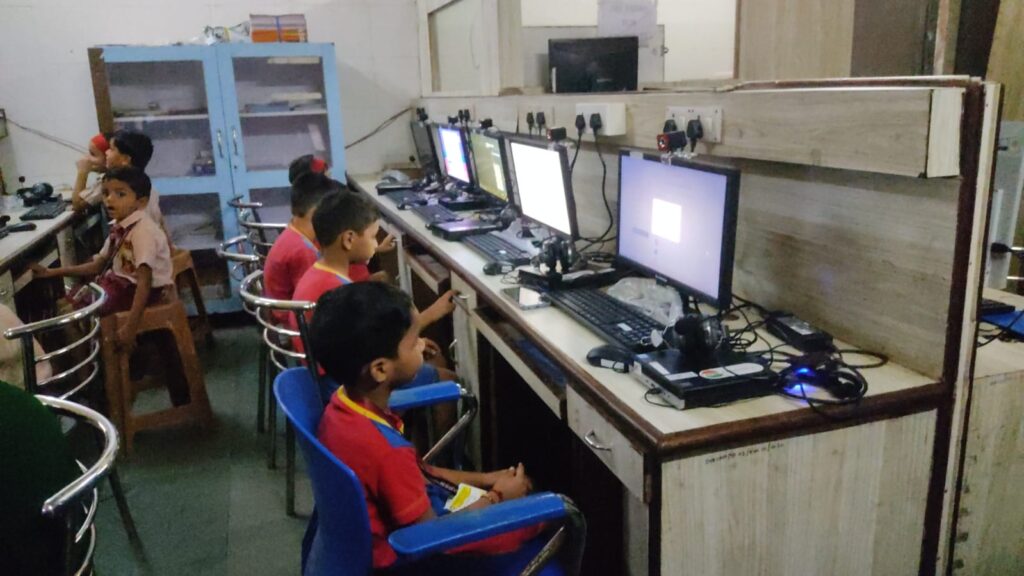For over a century, classrooms have looked the same—rows of benches, a teacher with chalk at the blackboard, and children copying notes into their books. But while the world outside has changed dramatically—AI, coding, and digital skills dominating the future—most classrooms remain stuck in the past.
This dialogue between a concerned parent and an educationist explores why traditional chalk-and-talk methods no longer serve today’s children and how shifting from chalkboards to keyboards with APNA PCs is the key to preparing them for the future.

Parent: Sir, whenever I visit my son’s school, I feel like I’m stepping back in time. The classrooms look exactly like the ones I studied in—teacher at the blackboard, students copying notes. Aren’t we supposed to have moved forward by now?
Educationist: You’re absolutely right. Most schools are still using a 19th-century model of education—designed for the industrial age. Back then, the goal was to train children to follow instructions, memorize, and pass exams. That model simply doesn’t work in today’s digital world.
Parent: But schools keep saying they have “smart classes.” Don’t those solve the problem?
Educationist: Not really. In many cases, “smart class” means a projector showing preloaded slides while students still sit passively. The teaching remains one-way, not interactive. Real transformation happens only when children use technology themselves—when they move from being passive note-takers to active learners.
Parent: So you’re saying chalkboards aren’t enough anymore?
Educationist: Exactly. Chalkboards limit knowledge to what the teacher knows and writes. Keyboards, through APNA PCs, open up the entire world. With one PC, a child can access interactive simulations, coding tools, language learning apps, and more. They don’t just hear about science—they can see it, experiment with it, and even create projects.
Parent: That sounds exciting, but don’t children get distracted by computers?
Educationist: Distraction happens when technology is misused. But APNA PCs are designed as education-first tools. They come with curated learning apps, dashboards for parents and teachers, and safe access controls. Instead of wasting hours on entertainment, children use the PC to build skills.
Parent: I see. But is this shift really urgent? After all, we studied with chalkboards and turned out fine.
Educationist: That’s a common thought. But the world your child will enter is very different from the one we grew up in. Employers no longer look for people who can just memorize—they want problem solvers, communicators, and digital natives. If children are stuck in chalkboard classrooms, they’ll be left behind in a keyboard-driven world.
Parent: So schools that still rely only on chalkboards are actually holding students back?
Educationist: Sadly, yes. It’s like teaching children to ride a bullock cart when the world is flying airplanes. We cannot prepare them for tomorrow with yesterday’s tools.
Parent: That makes sense. But can all schools afford this shift?
Educationist: With expensive smart boards, maybe not. But that’s where the APNA PC changes everything. At just ₹9,999, it’s affordable even for small private schools and community pods. Instead of spending lakhs on fancy infrastructure, schools can invest in PCs that directly impact learning.
Parent: So you’re saying the real “smart class” is not a projector, but a PC on every desk?
Educationist: Exactly. The shift is not about gadgets—it’s about empowerment. When each child has access to a PC, learning stops being teacher-dependent and becomes self-driven. That’s how classrooms evolve from chalkboards to keyboards.
Parent: Honestly, I wish my school days had been like this.
Educationist: And that’s the dream for today’s children. Let’s not make them repeat the past. Let’s give them the tools for the future.
Chalkboards belong to the past. Keyboards belong to the future. If we want our children to thrive in tomorrow’s world, we must evolve our classrooms today.
👉 Don’t let your child get stuck in outdated systems. Invest in APNA PCs and turn every home, school, or pod into a future-ready classroom.
